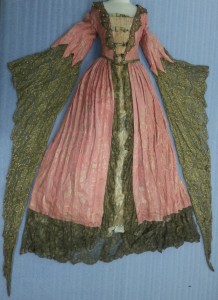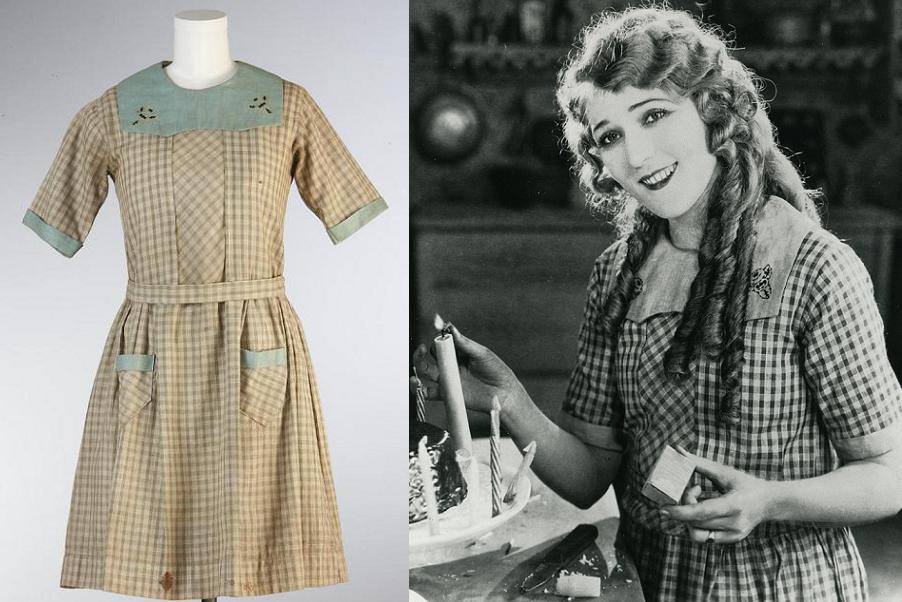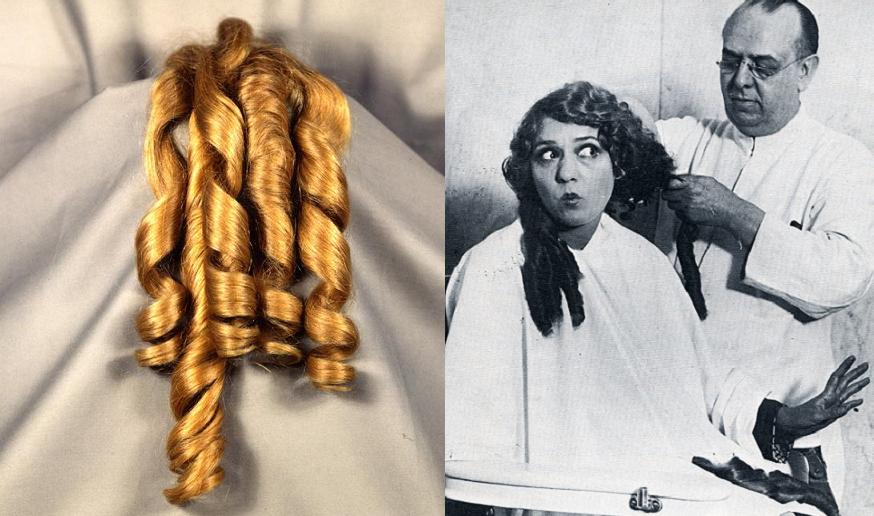Recently, a Mitchell Leisen-designed costume Mary Pickford wore in the film Dorothy Vernon of Haddon Hall (1924) that had been loaned to the Pickford Theater in Cathedral City was returned to the Mary Pickford Foundation. In order to assure the proper care and preservation of this exquisite dressing gown, we made an easy decision: donate the costume to the place Mary herself had given several of her costumes back in 1932 and the custodian of the largest collection of Pickford costumes, The Natural History Museum of Los Angeles.

The dressing gown now joins more than a dozen other Pickford costumes, including several others from Dorothy Vernon of Haddon Hall such as the green velvet gown with silk panels laced with silver and pearls and an ornate bonnet headpiece, the blue and magenta velvet gown with cotton lace collar and silk chiffon and taffeta linings, and a black evening dress with gold metallic brocading, velvet trim, pearl beading and gold metallic lace that Pickford wore in her most elaborately costumed drama. The NHM’s collection also includes a gown and a robe worn by Clare Eames who played Queen Elizabeth I in the film.
Beth Werling, Collections Manager of the History Department at the NHM, says that “the depth of Pickford’s involvement in costume design highlights her brilliant producing skills as well as her realization that clothes were key to the art of storytelling.” Indeed, the costumes at the Museum testify to Pickford’s attention to detail, her hiring of the most talented crew available as well as her ever-present thrift. For instance, the black evening dress she wore in Dorothy Vernon can be seen again in Taming of the Shrew—draped over a trunk.
Other highlights of the Museum’s holdings include the pink tulle evening gown Pickford wears in the country club dance scenes in Coquette. Mary convinced Howard Greer, the former head of costumes at Paramount who had left the studio to open his own store in Beverly Hills, to make her costumes for the film, and the satin and tulle dress personifies the sweet yet adult sophistication Pickford wanted to convey. The dress and the ribboned belt that cinches that dress remain in remarkable condition.

Mary’s dresses from Little Annie Rooney might not appear as spectacular as the laced and bejeweled costumes from Dorothy Vernon, but they are just as important in conveying the essence of her character. The Museum has two of Mary’s costumes from Little Annie Rooney, the plaid linen dress with a beige a wool tweed jacket and her tam o’shanter, as well as the printed cotton dress she wore in the birthday party scene.

The Museum’s collection of Pickford costumes doubled in size in 2005 when the Los Angeles County Museum of Art returned almost all of the film costumes that they had taken when they left the Exposition Park museum back in 1965 to establish LACMA on Wilshire Boulevard. Those Pickford costumes had been donated to them by Mary’s estate in 1981.
Everyone interested in preserving film costumes has learned hard lessons over the past few years as we watched the painful dismantling of Debbie Reynolds’ costume collection that she spent decades and a small fortune trying to save. There have been high points as well, such as Deborah Nadoolman Landis, director of the David C. Copley Center for Costume Design at UCLA, curating the spectacular costume exhibit at the Victoria & Albert Museum in London and then bringing it to Los Angeles, under the auspices of the Academy of Motion Picture Arts and Sciences in 2014. But the exhibit also served to remind us how these costumes have been spread throughout the globe and that the cost and care necessary to pull off such a program is almost prohibitive.
That makes it all the more important that as many costumes as possible be housed in one place, and that makes the Natural History Museum’s collection such a treasure. Knowing that Pickford’s costumes are there to be exhibited and loaned to inspire new generations of film lovers is heartwarming. And the power of the Pickford legacy is confirmed by Beth Werling when she points out while the Museum has 35 million artifacts, among the top ten most requested items are Mary Pickford’s famous curls—five long golden ringlets from when she bobbed her hair in 1928—that she gave the museum in 1932.
